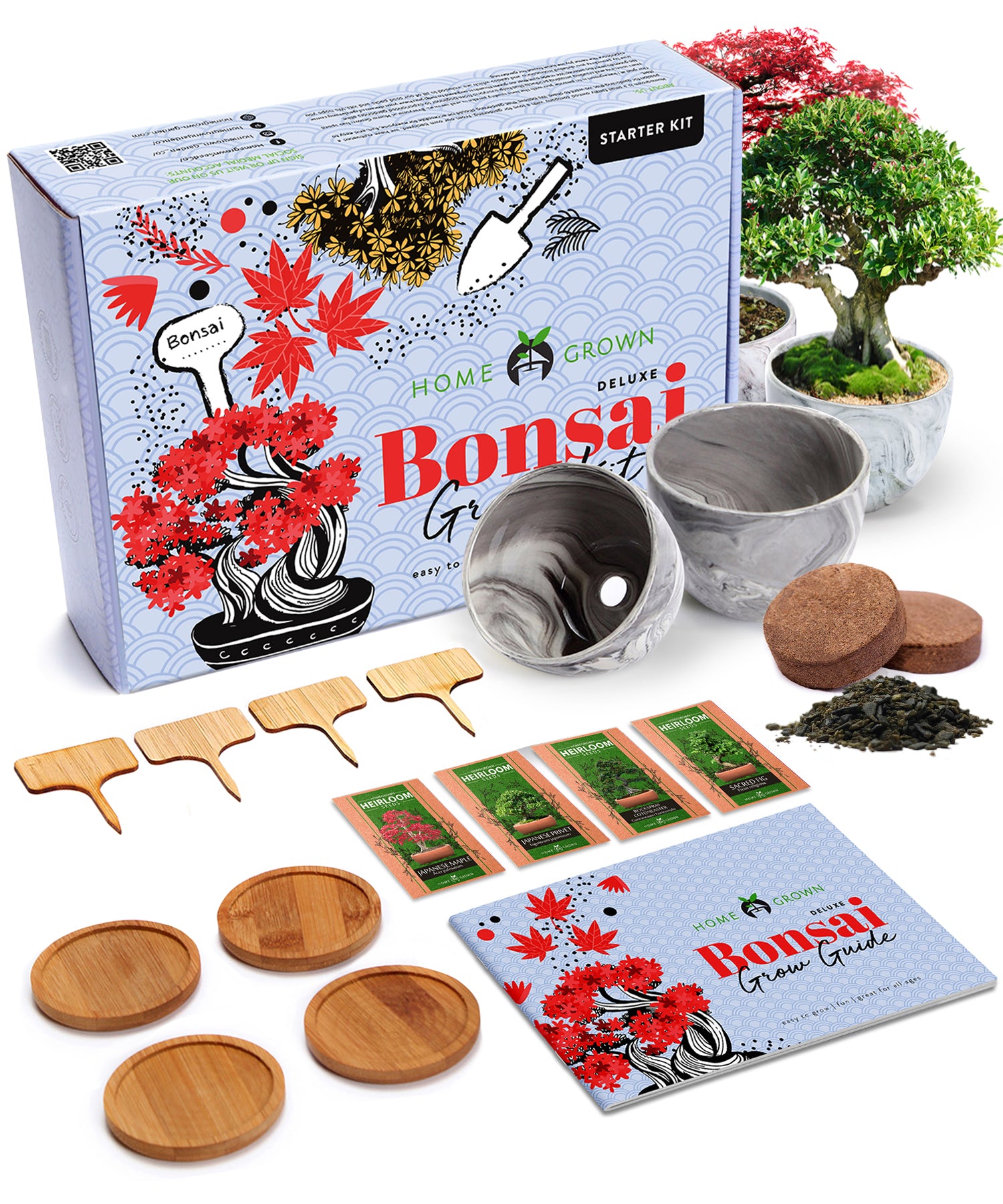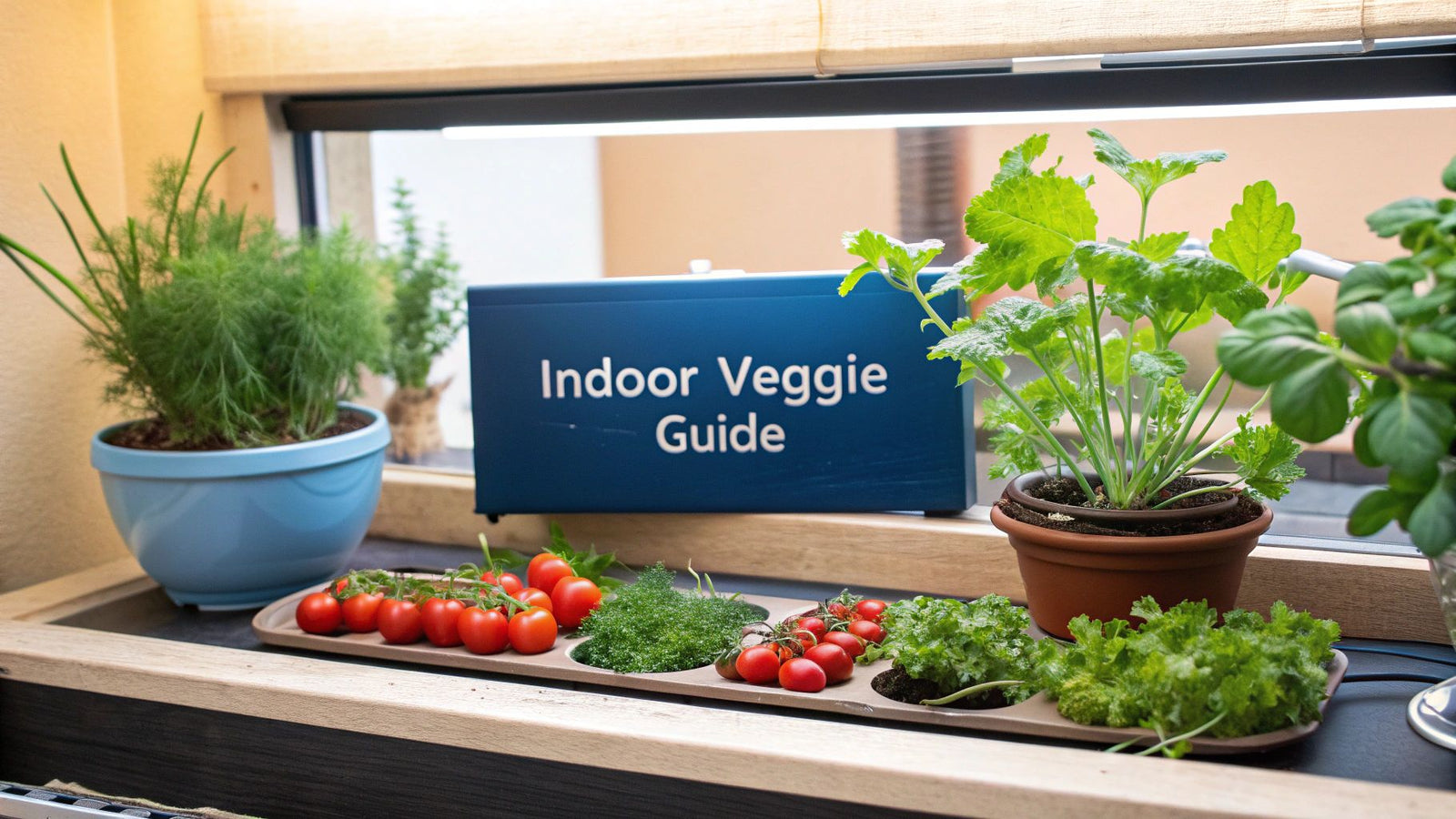
When it comes to growing vegetables indoors for the first time, I've found it all comes down to three things: enough light, the right container, and a smart plant choice. If you can nail these basics, you're well on your way to harvesting fresh produce right from your kitchen counter, no backyard required.
Starting Your Indoor Vegetable Garden in 7 Easy Steps
The idea of an indoor vegetable garden can feel a little intimidating, but it's genuinely more achievable than you might think. Forget the image of a massive greenhouse or a room full of expensive gear. All you really need is a dedicated spot and a bit of foundational know-how.
Think of this as your launchpad. The goal here is to build your confidence with a few early wins, proving to yourself that you can absolutely grow delicious vegetables right inside your own home.
1. Gather Your Essential Supplies
Before you get lost in seed catalogs, let's talk about the gear. A successful start really hinges on having the right tools ready to go from day one.
- A Light Source: The MVP of indoor gardening. A south-facing windowsill that gets at least 6-8 hours of direct sun is perfect. If your home is a bit darker, don't worry—a simple clip-on LED grow light is a fantastic and affordable workaround.
- Containers with Drainage: This is non-negotiable. Any pot will work as long as it has holes in the bottom. Without drainage, roots sit in stagnant water and rot, which is probably the most common (and heartbreaking) mistake I see beginners make.
- Potting Mix: Whatever you do, don't just scoop up dirt from your yard. Grab a bag of high-quality, sterile potting mix made for containers. It's lightweight, drains properly, and won't bring any unwanted pests or diseases into your home.
2. Choose Your First Plants Wisely
Okay, now for the fun part. Picking the right vegetables is a huge factor in your success. Some plants just handle indoor life better than others. For your first go, I always recommend focusing on crops known for being forgiving and productive in containers.
The secret to a great first harvest is picking plants that want to grow for you. Fast-growing leafy greens and herbs often provide the quickest reward, which is a fantastic motivator to keep your garden going.
This infographic breaks down the core pieces you'll need to kick off your indoor gardening adventure.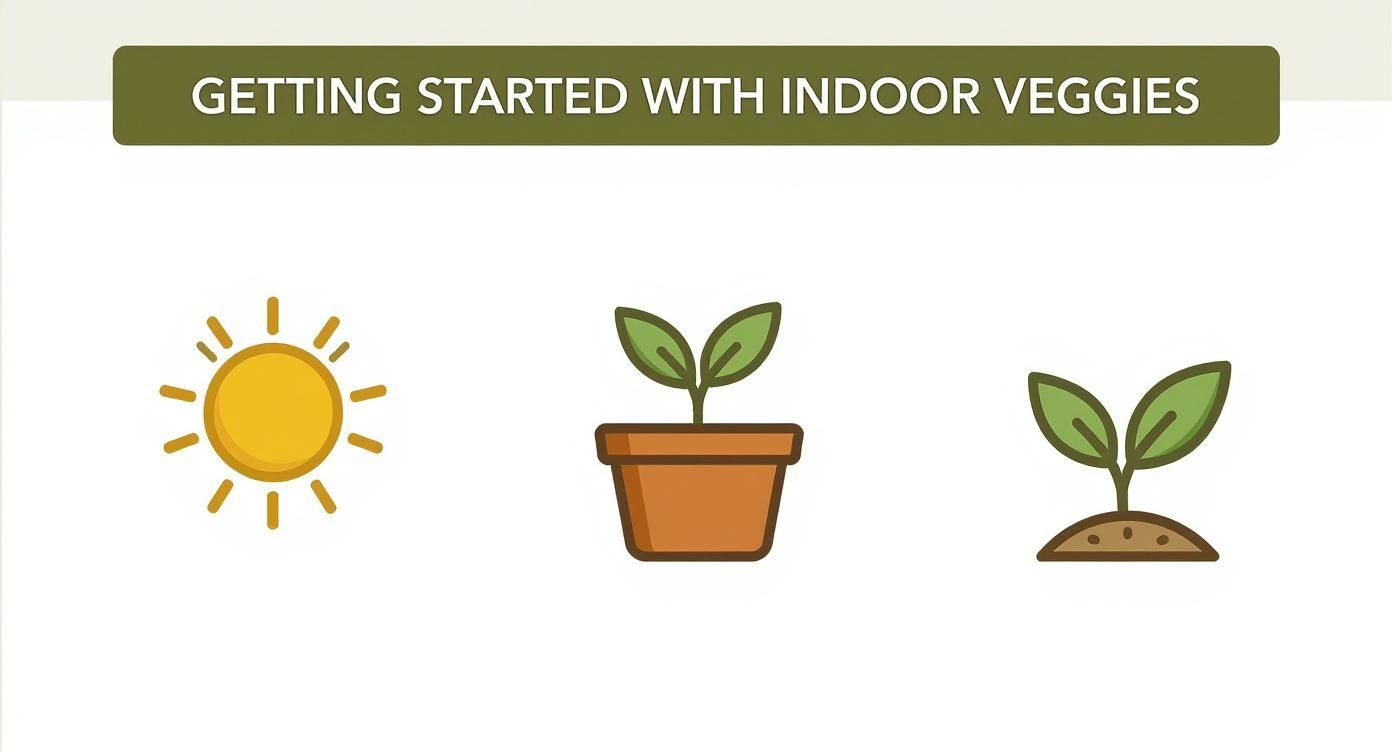
As you can see, this visual highlights that success really does begin with just those three simple things: sun, a proper pot, and a good seed.
To help you decide what to plant first, I've put together a quick comparison of some excellent beginner-friendly options. This table gives you a snapshot of what to expect from each.
Beginner-Friendly Indoor Vegetable Comparison
| Vegetable | Light Needs (Hours/Day) | Minimum Container Depth | Average Days to Harvest |
|---|---|---|---|
| Leaf Lettuce | 10-12 | 5 inches | 30-45 |
| Spinach | 10-12 | 6 inches | 40-50 |
| Radishes | 6-8 | 6 inches | 25-35 |
| Bush Beans | 8-10 | 8 inches | 50-60 |
| Basil | 12-14 | 6 inches | 60-70 |
This should give you a solid starting point for choosing a plant that fits your space and your patience level! For a more detailed walkthrough, you can explore our full guide on how to start an indoor garden.
7 Best Vegetables for Indoor Harvests
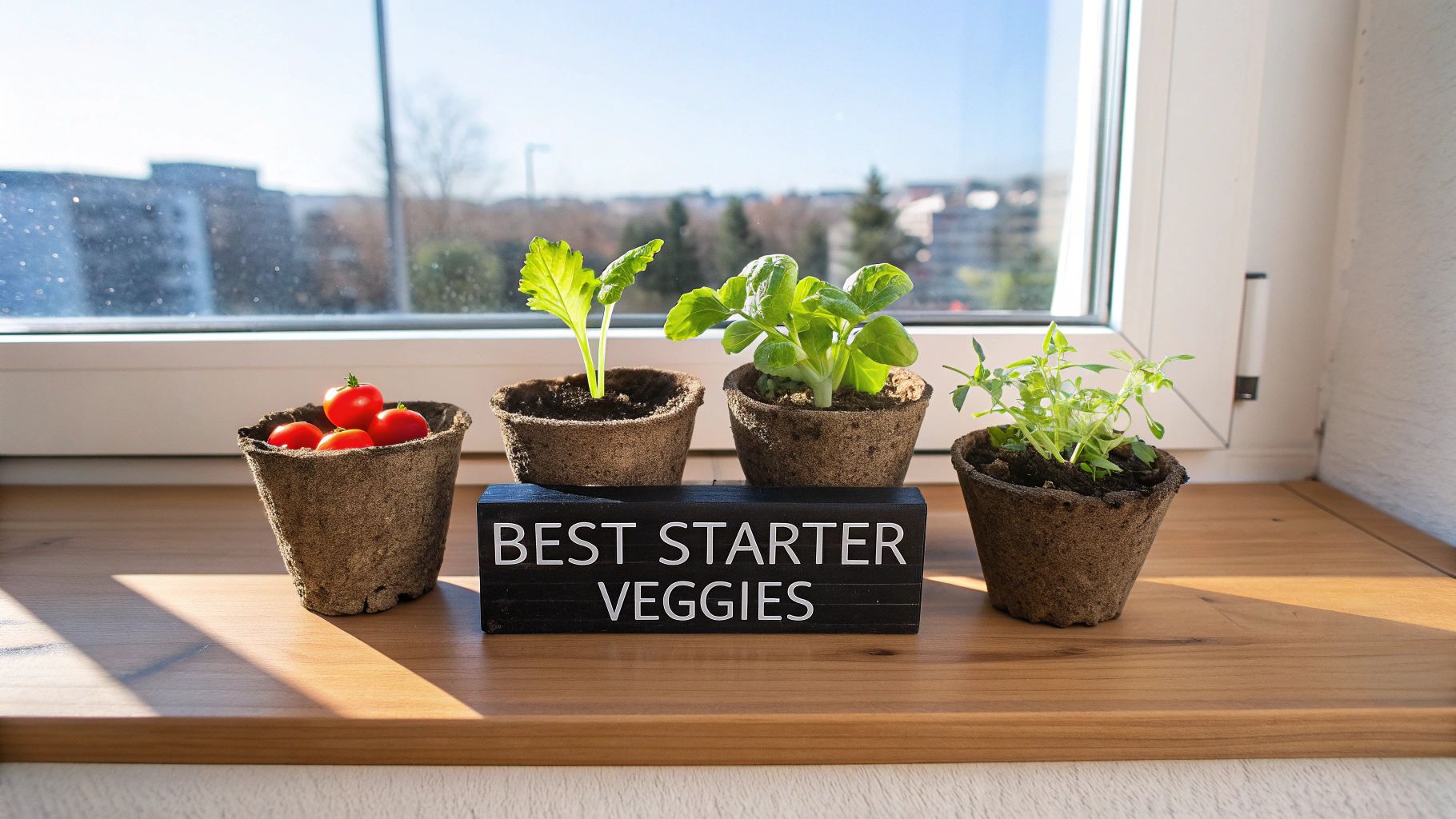
Let's be honest—not every vegetable is going to thrive in your living room. The key to a successful first harvest is choosing plants that are actually suited for indoor life. We've handpicked seven proven winners known for their reliability, compact size, and generous yields. Think of this as your starter pack for indoor gardening success.
Starting with the right plants helps you avoid the classic beginner mistake: picking something that needs more sun, space, or attention than you can give. We'll break down why each of these seven is a great choice.
1. Leafy Greens Are Your Best Friend
If there's one category to start with, it's leafy greens. Things like leaf lettuce, spinach, and arugula are practically made for indoor setups. They grow shockingly fast, are perfectly happy in shallow pots, and let you harvest over and over again.
Just use the "cut-and-come-again" method—snip off the outer leaves as you need them, and the plant will keep pushing out new growth from the center. Look for varieties like 'Black Seed Simpson' lettuce, which does exceptionally well under grow lights and is less prone to "bolting" (flowering too early).
2. Radishes for a Quick Confidence Boost
Want a fast victory? Plant radishes. Seriously, you'll feel like a gardening pro in no time. Varieties like 'Cherry Belle' can go from a tiny seed to a spicy, crunchy root in less than a month.
They don't demand a ton of light and are content in containers that are at least 6 inches deep, which gives their roots enough room to develop. The sheer speed of a radish harvest is an exciting motivator for any new gardener.
3. Compact Cherry Tomatoes
While a standard tomato plant would take over your entire apartment, there are fantastic dwarf varieties bred specifically for pots. Keep an eye out for names like 'Tiny Tim' or 'Red Robin'—these are your golden ticket.
These little plants stay compact and bushy but still produce an incredible amount of sweet, snackable tomatoes. They do require a good quality grow light and a bit more patience than greens, but trust me, the taste of a homegrown tomato in the middle of winter is worth every bit of effort.
There's nothing quite like enjoying produce that's completely out of season. Picking a fresh, warm cherry tomato in February feels like a small, delicious miracle. It's moments like these that remind you why you started in the first place.
4. Aromatic Herbs
You can't go wrong with fresh herbs. They're an easy and rewarding entry point into indoor gardening.
- Basil
- Mint
- Chives
- Parsley
All of these are incredibly simple to manage on a sunny windowsill or with a basic grow light. Plus, they add instant, vibrant flavor to your meals and make your home smell amazing.
5. Flavor-Packed Microgreens
Microgreens are the definition of instant gratification. They are simply the baby seedlings of vegetables like broccoli, kale, or sunflowers, and you harvest them right after their first true leaves appear.
They're absolutely bursting with concentrated flavor and nutrients. Best of all? You can have a full harvest in just 10-14 days.
6. Bush Beans
Forget the sprawling vines that need a huge trellis. Bush bean varieties are bred to stay small and tidy, producing full-sized green beans right in a container. They are surprisingly low-maintenance and give you a great yield for the small amount of space they occupy.
7. Carrots That Actually Fit in a Pot
Yes, you can even grow carrots indoors! The trick is to choose short, round varieties that don't need a foot of deep soil to grow. Look for "Paris Market" or other globe-shaped types. A pot that's at least 8 inches deep is all you need for a truly unique and tasty harvest.
The surge in home gardening isn't just a niche hobby. The global indoor plants market was valued at USD 20.68 billion in 2024 and is expected to continue its strong growth. This trend is fueled by our collective desire for beautiful living spaces, personal wellness, and a closer connection to our food. You can learn more about the trends in the indoor plant market and see the full analysis.
Setting Up Your Containers and Soil for Success
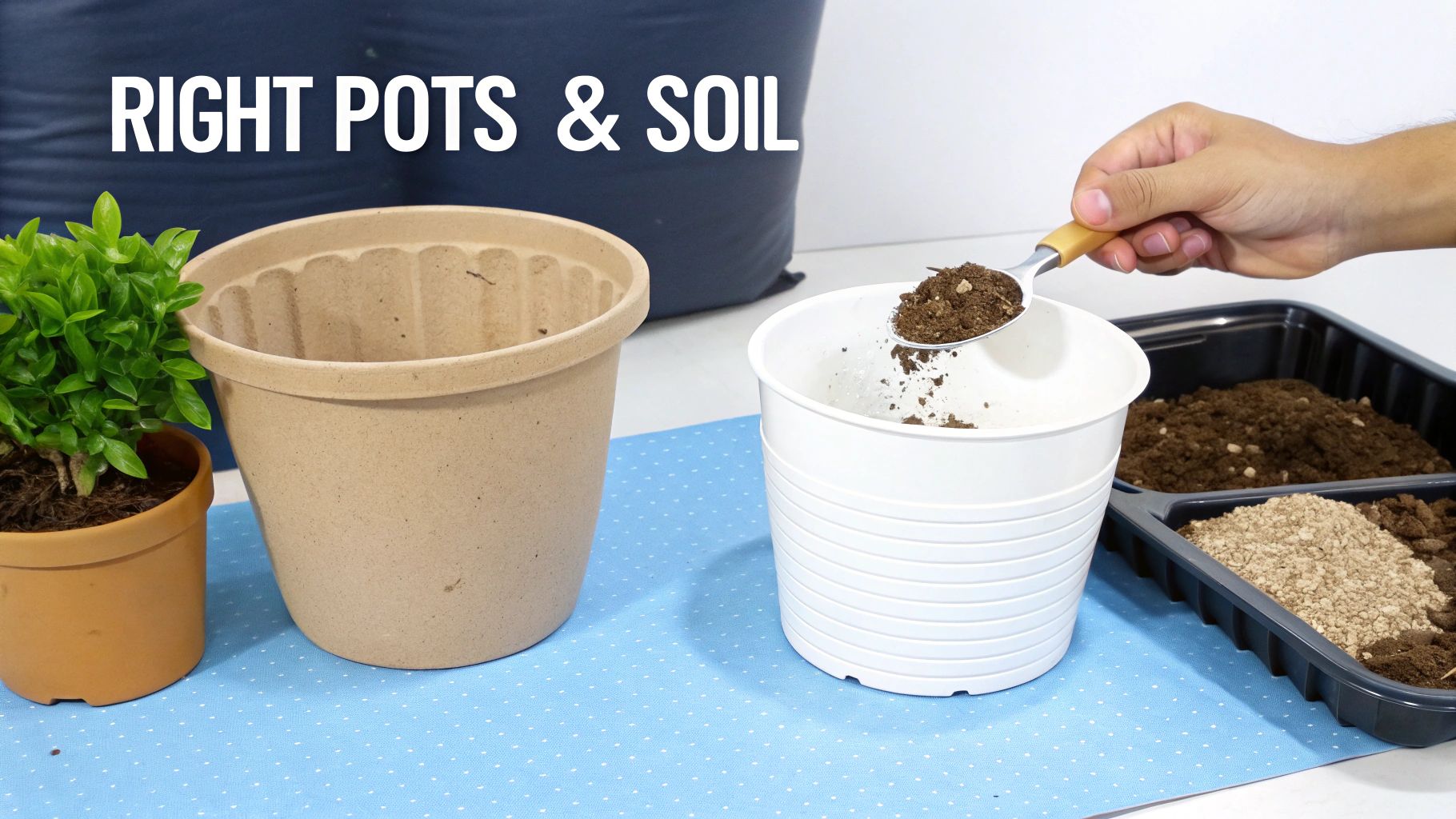
When you're growing indoors, the container and soil you choose aren't just accessories—they're your plant's entire world. A great setup provides a healthy home where roots can thrive, but a poor one can set you up for frustration right from the get-go. Getting this foundation right is probably the most important thing you can do as a beginner.
It’s easy to think choosing a pot is just about looks, but the material actually has a huge impact on your watering routine and the overall health of your plants. Each type comes with its own quirks, especially when you bring them inside.
Picking the Perfect Pot
Let's break down the three most common options you'll find at any garden center.
- Terracotta Pots: These classic clay pots are beautiful and porous, which means air and water can pass right through the walls. This is a huge plus for preventing root rot (a common beginner mistake!), but it also means the soil dries out much faster. You'll just need to keep a closer eye on watering.
- Plastic Containers: Lightweight, cheap, and available everywhere, plastic pots are great at holding onto moisture. This can be a lifesaver if you're a bit forgetful with the watering can, but it also makes it easier to overwater. The key is to make sure they have plenty of drainage holes.
- Fabric Grow Bags: Honestly, these are a fantastic choice for indoor gardeners. Fabric bags encourage a process called "air pruning." When a root hits the fabric wall, it stops growing in a circle and instead branches out, creating a much healthier root system and preventing the plant from becoming root-bound. They offer the best drainage and aeration of all three types.
No matter what material you end up with, there's one rule that's absolutely non-negotiable: your container must have drainage holes. Without a way for excess water to escape, it will pool at the bottom, suffocate the roots, and inevitably cause root rot. It’s a plant's worst enemy.
Building a Healthy Soil Foundation
Now, let's talk about what goes inside that pot. It’s so tempting to just grab a scoop of dirt from the backyard, but trust me, that's a recipe for disaster. Outdoor soil is heavy, compacts easily in pots, and is often full of pests, weed seeds, and diseases you definitely don't want to invite into your home.
What you need is a sterile, lightweight potting mix made specifically for containers. These mixes are engineered to provide the perfect balance of aeration, moisture retention, and nutrients that indoor plants need to really flourish. When you pick up a good bag of potting mix, it should feel light and almost fluffy.
A plant's roots are its lifeline, constantly searching for water, oxygen, and nutrients. A light, airy potting mix is like giving them an easy-to-navigate map, while compacted garden soil is a maze full of dead ends.
If you enjoy getting your hands dirty, you can easily create your own superior potting mix. This gives you total control over the ingredients and can even be more cost-effective in the long run. Here’s a simple recipe I use all the time to get started.
DIY Potting Mix Recipe:
- 2 parts Coco Coir: A sustainable alternative to peat moss that’s incredible at holding water.
- 1 part Perlite: Those little white volcanic rocks. They create air pockets in the soil, which is crucial for drainage and preventing compaction.
- 1 part Compost: This is the good stuff. It adds essential organic matter and a slow-release source of nutrients to feed your plants over time.
Just mix these three ingredients together, and you'll have a perfect starting medium for strong, healthy root development.
Getting Your Indoor Lighting Right
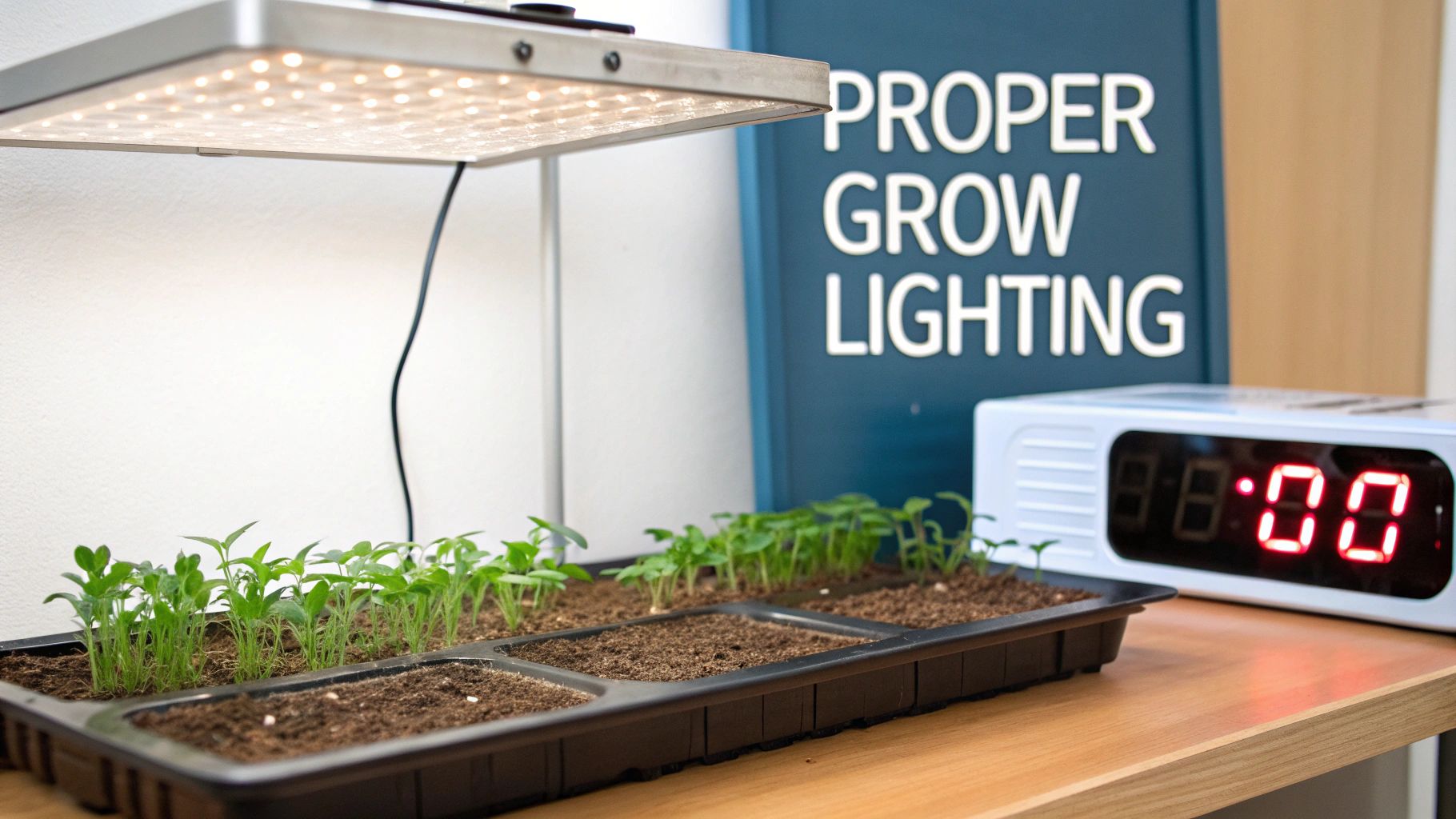
Unless you're lucky enough to have a wall of perfectly sunny, south-facing windows, artificial lighting is going to be the single most important part of your indoor garden. Plants run on light, using it for photosynthesis to create their food. A standard desk lamp or overhead room light simply won't provide the right kind of energy they need to thrive.
This is where grow lights come in, and they are your absolute best friend when starting out.
The good news? You don't need some complex, bank-breaking setup. Modern LED grow lights are fantastic—they're incredibly energy-efficient, last for years, and come in all shapes and sizes. You can find options for a single pot of basil on your counter or a full multi-shelf vegetable operation. They’re designed to deliver the exact light wavelengths plants crave.
The proof is in the numbers. The global indoor farming tech market hit $22.3 billion in 2023 and is expected to nearly double to $42.6 billion by 2030. This boom shows just how effective and accessible these controlled growing setups have become. You can read more about the rise of indoor farming technology to see how big this movement is.
Understanding Light Spectrum and Duration
As you shop for grow lights, you’ll constantly see the term “full-spectrum.” It’s not just marketing jargon. Think of it as a light that tries its best to mimic natural sunlight. It provides the blue light that fuels leafy, vegetative growth and the red light that encourages flowering and fruiting. For anyone new to this, a full-spectrum LED is the easiest, most effective choice for almost any vegetable you can think of.
Just as crucial as the type of light is how long it’s on. Most vegetables and herbs need a solid 12 to 16 hours of light every single day. The easiest way to nail this is to plug your light into a cheap outlet timer. Seriously, this little gadget is a game-changer. It automates the whole process, giving your plants a consistent "day" and "night" cycle without you ever having to think about it.
A huge mistake I see beginners make is leaving their lights on 24/7. It seems logical—more light, more growth, right? But plants actually need a dark period to rest and process the energy they’ve made, just like we need sleep.
Choosing the Right Light for Your Plants
The light you pick really comes down to what you want to grow. Let's break down a couple of common scenarios.
- Growing Leafy Greens and Herbs: For things like lettuce, spinach, basil, or mint, you can get by with a pretty simple setup. A small clip-on LED light or a modest light panel is more than enough. These plants aren't nearly as light-hungry as their fruiting cousins.
- Growing Fruiting Plants (Tomatoes, Peppers): If you have your heart set on fresh tomatoes or peppers, you’ll need to step up your light game. To get these plants to flower and actually produce fruit, they need a much more powerful and intense light source. A more robust LED panel is a must here.
A good rule of thumb is to hang your LED lights about 6-12 inches above the tops of your plants. Watch your plants for clues! If the leaves look a little bleached or scorched, the light is too close. If your seedlings are getting super tall and skinny, they're "leggy"—stretching desperately for the light—which means you need to move it closer.
For a much deeper look at specific models and features, be sure to check out our detailed guide on the best grow lights for indoor plants.
Nailing the Watering and Feeding Game
If there’s one hurdle every new indoor gardener faces, it’s figuring out when and how much to water. It’s a bit of a dance, but you’ll get the hang of it. Believe it or not, most beginners kill their plants with kindness—too much water is a far more common problem than too little.
Forget about a strict weekly schedule. The best way to know if your plants are thirsty is to get your hands a little dirty. Just stick your finger about an inch into the soil. If it feels dry and comes out clean, it’s watering time. If you feel damp soil, hold off for another day or two and check again. It's that simple.
How to Water Like a Pro
Once you know it’s time, the how is just as important as the when.
Always try to use room-temperature water. Cold water straight from the tap can be a real shock to your plant’s roots, which can slow down its growth. It's also worth thinking about your water quality; even tap water can contain things that build up over time. Some gardeners are surprised to learn about the effects of chlorinated water on sensitive plants.
When you do water, be generous. Pour water evenly over the soil until it starts to freely drain out of the bottom of the pot. This makes sure the entire root system gets hydrated. But here’s the critical part: don’t let your plant sit in that drained water. After a few minutes, dump out any excess from the saucer. A plant left standing in a puddle is a prime candidate for root rot.
I like to think of it as mimicking nature's "drought and flood" cycle. This encourages the roots to grow deeper and stronger as they search for moisture, building a much more resilient plant overall.
A Beginner's Guide to Plant Food
Your potting mix has a finite amount of food in it. Eventually, your hungry plants will need a boost, and that's where fertilizer comes in. When you look at a bottle of plant food, you’ll see three numbers prominently displayed, something like 5-10-5. This is the N-P-K ratio.
Here’s what those letters mean for your plants:
- Nitrogen (N): The fuel for green, leafy growth.
- Phosphorus (P): Essential for strong roots, flowers, and fruit production.
- Potassium (K): The key to overall plant health and fighting off disease.
For anyone just starting, I always recommend a balanced, water-soluble liquid fertilizer. It’s easy to mix and gives your plants a quick nutritional kick they can absorb almost instantly. If you want to go deeper on this, we have a whole guide on finding a great organic vegetable fertilizer.
As a starting point, plan on feeding your veggies every 2 to 4 weeks while they’re actively growing in the spring and summer. Always read the instructions on the label. And if you're ever unsure, remember this: it is always better to under-fertilize than over-fertilize. Too much can "burn" the roots and do more harm than good.
Solving Common Indoor Gardening Problems
No matter how much you prepare, every gardener runs into a few hiccups. I like to think of these moments not as failures, but as your plants trying to talk to you. Learning to read their signals is one of the most satisfying parts of growing your own food.
Let's walk through some of the most common issues you'll likely face and how to fix them. A little bit of know-how can turn a potential plant disaster into a simple learning moment.
The Mystery of the 'Leggy' Seedling
Ever seen your seedlings shoot up, looking tall, thin, and kind of pale? That's a classic case of etiolation, or what we gardeners call "leggy" seedlings. It’s basically a desperate cry for more light. The plant is literally stretching itself thin trying to get closer to a better energy source.
Don't panic—this is an easy one. The immediate fix is to move your grow light closer, aiming for about 6 inches above the tops of your plants. If you're just using a windowsill, this is a clear sign you need to add a small grow light to give them the intensity they really need.
Here's a pro-tip from my own experience: add a small, oscillating fan to your setup. The gentle breeze does more than just improve air circulation and prevent mold. It also mimics natural wind, which encourages your seedlings to grow shorter, stronger stems from the very beginning.
Decoding Yellow Leaves
Yellow leaves are one of the most common signs that something is off, but what they mean depends on where you see them.
- Yellowing Lower Leaves: This usually points to a nitrogen deficiency. Your plant is smartly pulling this essential nutrient from its older leaves to fuel new growth. A quick dose of a balanced liquid fertilizer should clear this right up.
- Overall Yellowing and Drooping: Nine times out of ten, this is the classic sign of overwatering. The roots are suffocating and can't take up nutrients. The solution? Step away from the watering can. Let the soil dry out completely before you even think about watering again.
Battling Common Indoor Pests
Growing indoors creates a cozy little paradise for plants, but unfortunately, it's also a predator-free zone that pests find very inviting. Fungus gnats are probably the most frequent uninvited guests you'll have.
These tiny black flies are more annoying than anything else, but their larvae can damage the delicate roots of young seedlings. The best way to deal with them is with a simple, two-part strategy.
First, let the top inch or so of your soil dry out completely between waterings. Their larvae can't survive in dry conditions. Second, place a few yellow sticky traps around your pots. Adult gnats are attracted to the color yellow, and the traps will catch them, breaking their life cycle without any chemicals.
Growing vegetables indoors isn't just a hobby; it’s part of a much bigger shift. The global indoor farming market was valued at an incredible USD 42.08 billion in 2024 and is expected to more than double to USD 88.48 billion by 2030. This boom shows just how much demand there is for fresh, local produce, especially in cities where garden space is a luxury. You can discover more insights about the indoor farming market and see where things are headed.
Ready to get your hands dirty and start a thriving indoor garden? At Homegrown Garden, we have everything you need, from high-quality heirloom seeds to beginner-friendly kits and expert advice. We're here to help you grow with confidence. Come explore our collections and bring fresh, delicious vegetables right into your home. Visit us today at https://www.homegrown-garden.com.

